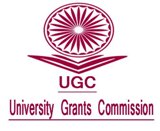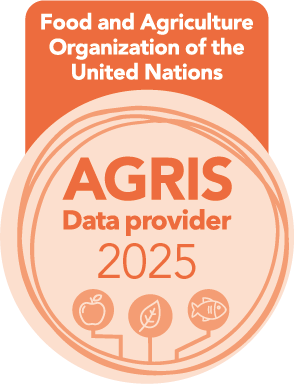Impact of Watershed Development Projects Implemented in Kerala
DOI:
https://doi.org/10.26725/JEE.2021.1.33.6531-6543Abstract
In the present study we look into the impact of 12 different watershed projects implemented in Kerala under the Western Ghats Development Programme on the water availability and soil conservation. The impact of the watersheds was assessed by examining the benefits that each watershed offered to the sample respondents, people participation in watershed programmes at different stages, budget utilization and target achieved with the help of a semi-structured interview schedule. The data collected were analysed using cluster analysis and ANOVA. The results of the data differentiate 12 watersheds into two different clusters with 4 watersheds in one cluster and the remaining watersheds in another. The results of the study found that there is a significant difference in people's participation with respect to different stages of project execution in different watersheds and also within each watershed. The study also pinpoints difference in achieving target and budget utilization among different watersheds.References
Bagdi, G. L & Kurothe, R. S. (2014). People's participation in watershed management programmes: Evaluation study of Vidarbha region of Maharashtra in India. International Soil and Water Conservation Research. 2 (3) pp. 57-66.
Bocklisch, F, Bocklisch, S.F., & Krems, J.F. (2012). Sometimes, often, and always: Exploring the vague meanings of frequency expressions. Behaviour Research Methods. 44:144–157.
Chinnadurai, M., Balarubini, M., Priyanka, & Asha,P (2019). Impact of watershed management programme in Chikkanan kuppam watershed of Vellore district. International Journal of Agricultural Science. 15(1):177-183. DOI:10.15740/ HAS/IJAS/15.1/177-183.
Department of land resources, (2010). Integrated wasteland development programme, Retrieved from https: /dolr.gov.in/integrated-wasteland-development-programme.
ENVIS Centre: Kerala State of Environment and Related Issues (2019). Kerala State Council for Science, Technology and Environment. Retrieved from http:/ www.kerenvis.nic.in/
Kimani, R.N, (2014). The effect of budgetary control on effectiveness of nongovern- mental organisations in Kenya, School of Business, University of Nairobi.
Mondal, B., Loganandhan, N., Patil, S.L., Raizada, A., Kumar, S., & Bagdi, G.L. (2020). Institutional performance and participatory paradigms: Comparing two groups of watersheds in semi-arid region of India, International Soil and Water Conservation Research. doi: https://doi.org/10.1016/j.iswcr.2020.04.002.
Mwangi, H.M., Julich S., & Feger K. H. (2016). Introduction to Watershed Management. In: Pancel L., Köhl M. (eds) Tropical Forestry Handbook. Springer, Berlin, Heidelberg.
Naeem , Sajid . (2018) .Study and Implementing K- mean Clustering Algorithm on English Text and Techniques to Find the Optimal Value of K, International Journal of Computer Applications , 182 (31): 975-8887.
Nagarajan, N. Poongothai. S, Ramesh. S & Swamidurai. S. (2014). Soil and Water Conservation of Manimuktha Watershed – A Case Study. International Journal of Scientific & Engineering Research. 5 (8) 1302-1312.
Raykov YP, Boukouvalas A, Baig F, Little M. A. (2016). What to Do When K-Means Clustering Fails: A Simple yet Principled Alternative Algorithm. PLoS ONE 11(9): e0162259. https://doi.org/10.1371/jour nal.pone.0162259.
Singh, Arun. (2017). Participatory Watershed Management: Indian Experiences. Regional Development: Theory and Practice Vol.4, Publisher: Concept Publishing House.
Siraw, Z . , Woldeamlak , Bew ket & Mekonnen, Adnew Degefu, (2018). Assessment of livelihood benefits of community - based watershed development in north western highlands of Ethiopia, International Journal of River Basin Management. DOI: 10.1080/15715124. 2018.1505733
Subha, Vishnudas, Savenije, Hubert & van der Zaag, Pieter. (2005). Participatory Watershed Development Practices in India — A Case Study in Kerala. 1-12. 10.1061/40763(178)88.
Thakkar, A. K., Desai, V. R., Patel, A., & Potdar, M. B. (2017). Impact assessment of watershed management programmes on land use/land cover dynamics using remote sensing and GIS. Remote Sensing Applications: Society and Environment, 5, 1-15.
Vaithiyanath, Samuel, G., & Sreenivasa Rao I . ( 2018 ) . A study on Extent of Participation and Perception of Farmers on Benefits of IWMP ( Integrated Watershed Management Programme). Journal of Extension Education. 30 (2): 6048-6055.
Wang, G., Mang, S., Cai, H., Liu, S., Zhang, Z., Wang, L., & Innes, J. L. (2016). Integrated watershed management: evolution, development and emerging trends. Journal of Forestry Research 27 (5),967–994. https:/ doi.org/10.1007/ s11676-016-0293-3
Western Ghats Development Programme (WGDP) (2014). The Detailed Operational Guidelines o f W G D P ( G . O . ( M S ) NO.16/2014/PLG. dated 30.04.2014. Government of Kerala. Western Ghats Cell.
Downloads
Published
How to Cite
Issue
Section
License
Copyright (c) 2021 https://creativecommons.org/licenses/by-nc-sa/4.0/

This work is licensed under a Creative Commons Attribution-NonCommercial-ShareAlike 4.0 International License.
Authors who publish with JEE agree to the following terms:
- Authors retain copyright and grant JEE right of first publication with the work simultaneously licensed under a Creative Commons Attribution License that allows others to share the work with an acknowledgement of the work's authorship and initial publication in this journal.
- Authors are able to enter into separate, additional contractual arrangements for the non-exclusive distribution of the journal's published version of the work (e.g., post it to an institutional repository or publish it in a book), with an acknowledgement of its initial publication in this journal.
- Authors are permitted and encouraged to post their work online (e.g., in institutional repositories or on their website) prior to and during the submission process, as it can lead to productive exchanges, as well as earlier and greater citation of published work (See The Effect of Open Access).
Extension Education Society
https://creativecommons.org/licenses/by-nc-sa/4.0/
This work is licensed under a Creative Commons Attribution-NonCommercial-ShareAlike 4.0 International License.













.png)

